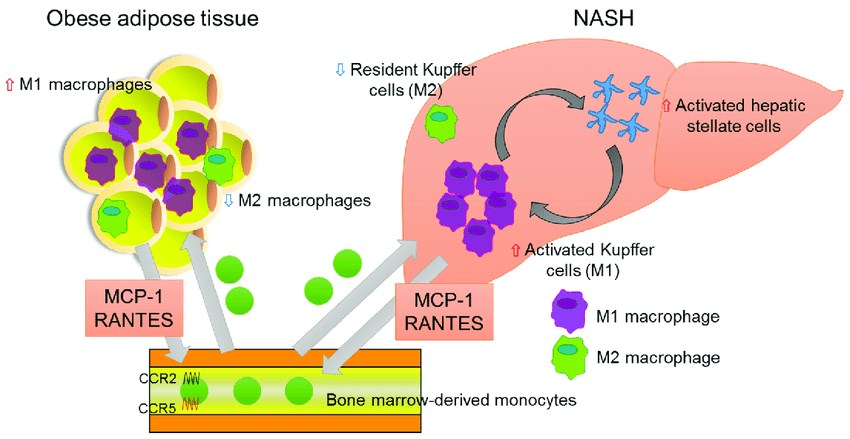NASH Target Development Service for Monocyte Chemoattractant Protein-1 (MCP-1)
Inflammation, insulin resistance, and fat accumulation are important pathogenesis of non-alcoholic steatohepatitis (NASH). Monocyte chemoattractant protein-1 (MCP-1) is an inflammatory chemokine that induces inflammation and insulin resistance. Its antagonists can significantly improve these characteristics of NASH, thus opening up new strategies for the treatment of NASH. As a pioneer in the development of drugs against NASH, Creative Biolabs provides a comprehensive one-stop service to help global customers with the screening, structural characterization and functional profiling of targets related to MCP-1 based on our drug discovery platform.
Introduction of MCP-1
Monocyte chemotactic peptide-1 (MCP-1), also known as chemokine C-C motif chemokine ligand 2 (CCL2), is a member of the β (C-C) chemokine family. It is the first discovered human chemokine which has been intensively studied recently. The human mcp-1 gene is located on chromosome 17 (chr. 17, q11.2), and the MCP-1 protein is composed of 76 amino acids with a size of 13 kDa. MCP-1 is secreted by different cell types which are crucial for the immune response, such as fibroblasts, epithelial, smooth muscle, astrocytic, monocyte, mesangial and microglial cells. And monocytes or macrophages are considered to be the main source. MCP-1 primarily responds to several inflammatory stimuli such as endotoxin (lipopolysaccharide, LPS), cytokines, activates and chemotactically attracts monocytes/macrophages. MCP-1 chemokine activity is mediated by the chemokine (C-C motif) receptor 2 (CCR2), which is expressed in different leukocyte cell populations. It has proven to be a key factor in the treatment of various diseases such as atherosclerosis, rheumatoid arthritis, and diabetes.
MCP-1 for NASH Treatment
NASH is characterized by hepatic fat deposition, inflammation, and varying degrees of fibrosis. Hepatocyte lipid accumulation caused by insulin resistance is a key pathogenic factor for the development of hepatic steatosis, and hepatocyte injury, inflammation, and fibrosis may be related to the expression of pro-inflammatory cytokines and the appearance of oxidative stress and mitochondrial dysfunction. In the liver, MCP-1 is a major monocyte chemoattractant in the progression of hepatic inflammation and fibrosis, and both increased hepatic expression and circulating serum levels have been described in NASH. This pathophysiological aspect of MCP-1 directly contributed to the lipid accumulation in hepatocytes via the activation of peroxisome proliferator-activated receptor α gene expression. In addition, MCP-1 plays an important role in stimulating inflammatory infiltration and may also have immunomodulatory effects, including enhanced expression of adhesion molecules in monocytes and promotion of proinflammatory cytokine synthesis, thereby amplifying the inflammatory cascade. Furthermore, MCP-1 causes the infiltration of macrophages into obese adipose tissue via binding to the CCR2 receptor and is involved in the development of insulin resistance and hepatic steatosis associated with NASH. Therefore, MCP-1 may be a reliable marker of hepatic inflammation in chronic liver disease. Its antagonists can interfere with MCP-1 expression or its interaction with CCR2 can improve insulin resistance and steatosis, opening up new ideas for the treatment of NASH.
 Fig.1 Association of chemokines and NASH. (Kitade, 2017)
Fig.1 Association of chemokines and NASH. (Kitade, 2017)
MCP antagonists can effectively improve NASH by inhibiting the synthesis of MCP-1 or its action, providing a new therapeutic strategy for the treatment of NASH. To improve NASH, Creative Biolabs provides the identification of various therapeutic targets related to NASH, and synthesis and optimization services for their antagonists. If you need any service about NASH, please feel free to contact us.
Reference
- Kitade, H.; et al. Nonalcoholic fatty liver disease and insulin resistance: new insights and potential new treatments. Nutrients. 2017, 9(4): 387.
 For Research Use Only.
For Research Use Only.